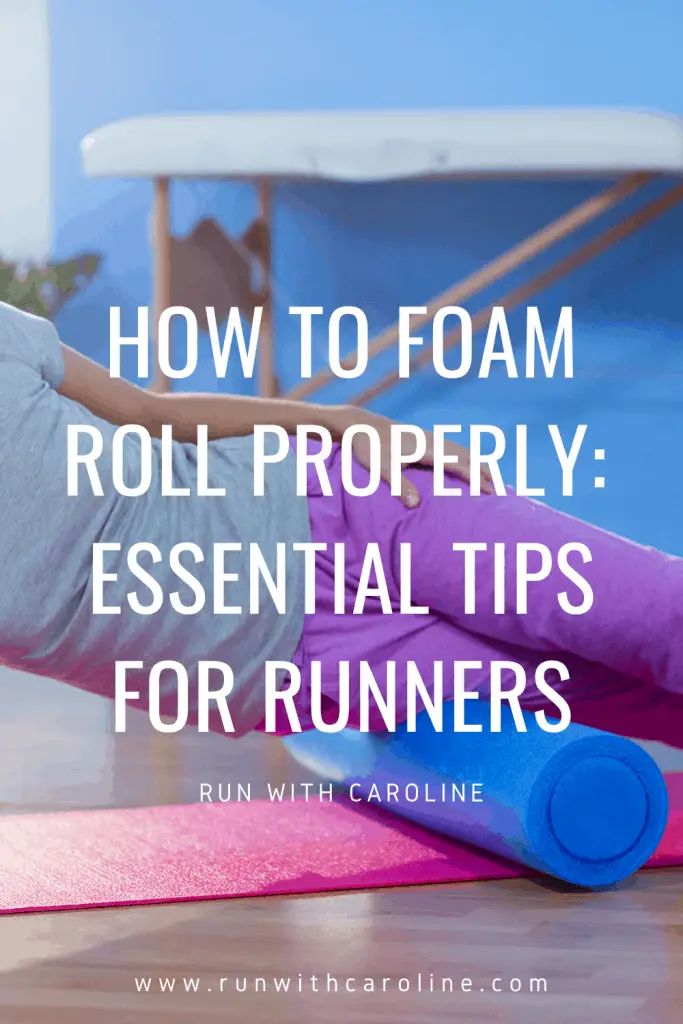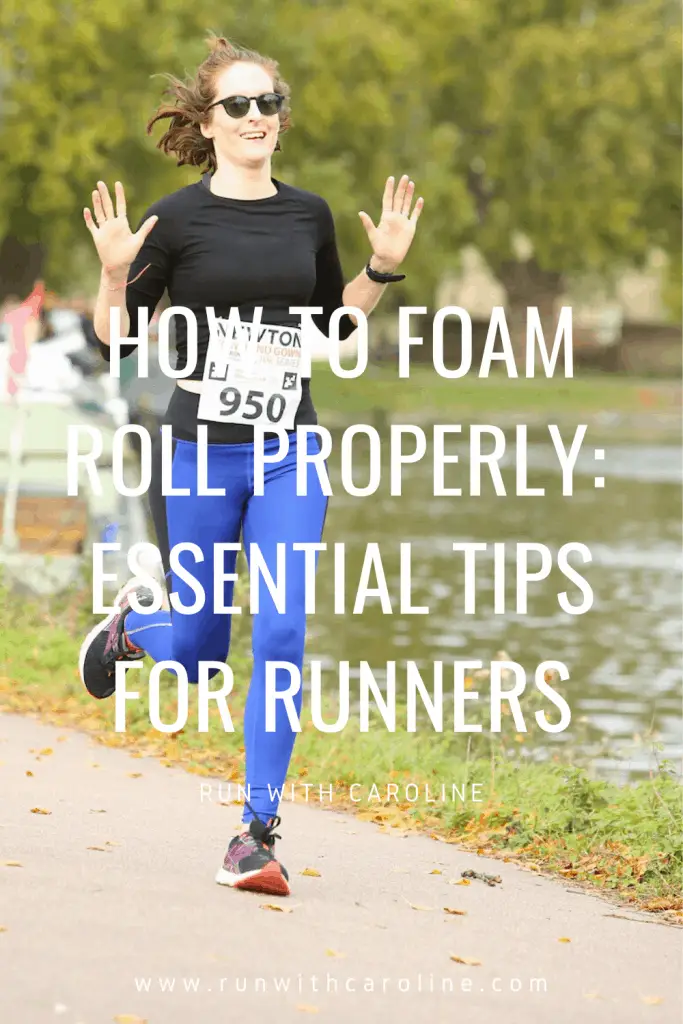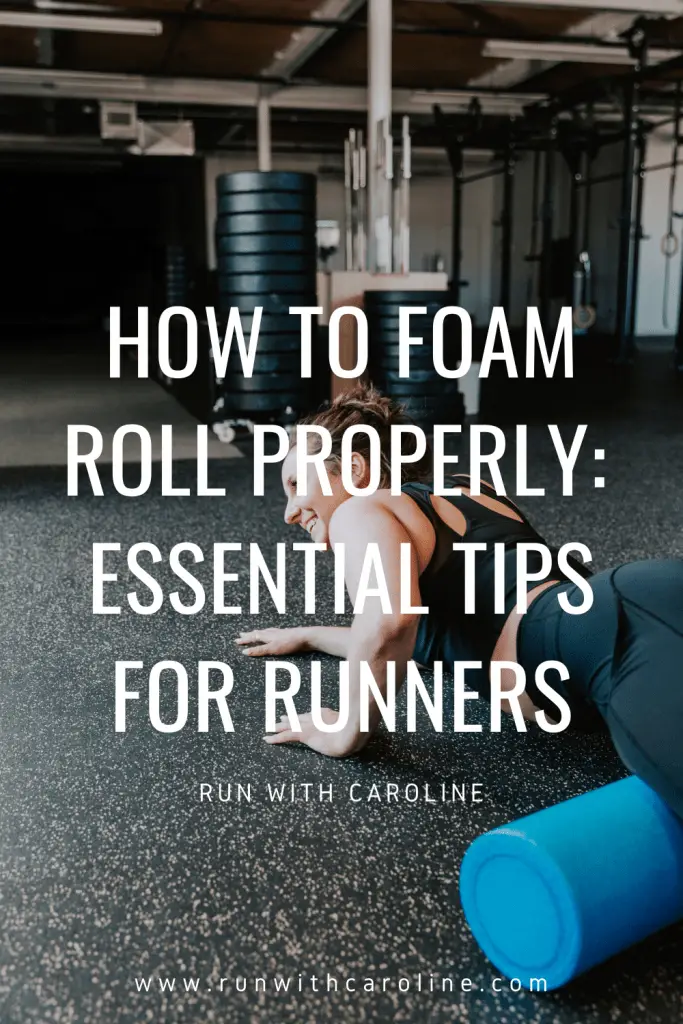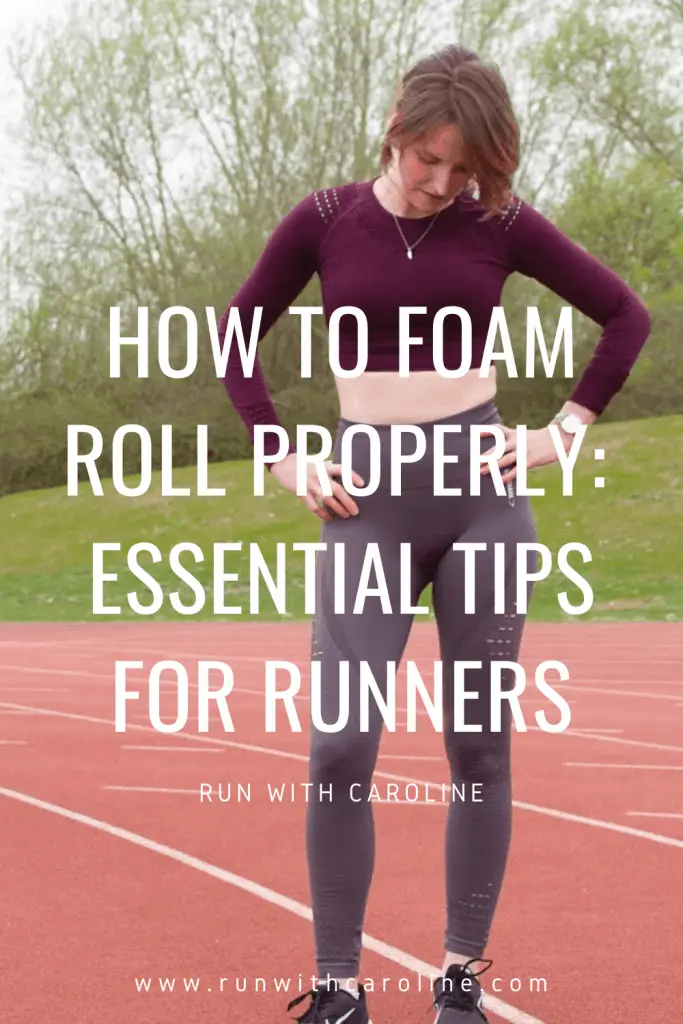There are so many benefits of foam rolling, especially for runners who regularly experience tight or sore muscles after a long run.
But how do you foam roll properly?
Many runners think foam rolling is just for injured muscle rehab.
This is a common mistake and one that could be holding you back.
Foam rolling (also known as self-myofascial release) provides many benefits, and is something that all runners should consider doing before and after a run.
In this guide, we’ll look at:
- What are the benefits of foam rolling?
- How do you foam roll safely?
- Which foam rollers are best?
- Where to buy a foam roller
Ready?
Let’s get going!

What are the benefits of foam rolling?
One of the foremost benefits of foam rolling is that it improves circulation and increases blood flow to your muscles.
This is important because it gets your body ready for a run and helps it recover afterwards.
Simply put, your muscles perform better when they are warmed up before a run.
The other benefit to foam rolling is that it loosens up your muscles.
If you have stiff muscles, it makes it harder to perform on long runs and shorter, speedier runs.
Muscle stiffness can impact your form when running.
If you have tight glutes, for example, this can affect how you power your leg forward during a run.
According to a 2015 study, foam rolling has “short-term effects on increasing joint range of motion without negatively affecting muscle performance.
The study concludes that foam rolling may help to reduce DOMS (delayed onset muscle soreness) after intense exercise.
Related: 10 common running injuries for women and how to prevent them
How do you foam roll safely?
If you’re new to foam rolling, then it’s important you do a bit of research before diving into an intense foam rolling session.
By research, I mean doing research on foam rolling itself (well done for finding this article) and on the types of foam rollers out there on the market.
If you want to foam roll properly, as many runners do, follow these simple dos and don’ts/
Dos
- Do expect a little bit of pain. Foam rolling hurts a bit, but it should always be a ‘good hurt’ – if there’s such a thing! It should never be a sharp, unbearable pain, just uncomfortable. The pain should feel much better after the session.
- Do wait between 24-48 hours between foam rolling sessions.
- Do foam roll slowly. Never roll in a fast back and forth motion.
- Do roll over each trigger point or knot between 5 to 10 times, spending no more than 20-30 seconds on each point.
Don’ts
- Don’t foam roll directly on a joint or bone.
- Don’t foam roll on your lower back. Use a tennis ball for this area or seek the advice of a professional.
- Don’t foam roll your neck. Always seek the advice of a professional when treating the neck.
- Don’t foam roll to the point of excessive soreness. Putting too much pressure on one part of the body may cause more harm than damage.
Related: 6 injury prevention strategies for pain free running

Which foam rollers are best?
There are lots of foam rollers out there on the market – you really are spoilt for choice!
It’s important to know the difference between low density and high density foam rollers so you foam roll properly.
The firmer the foam roller, the more intense the rolling session will be.
Here are the three main types of foam rollers:
- Soft. Soft foam rollers will be the softest when you sit on them. Choose a soft foam roller if your muscles are really sore. Work your way towards a firmer roller over time.
- Firm. Firm foam rollers are the hardest when you sit on them. These are great if you’re looking for a more intense, deeper release.
- Bumpy. Bumpy foam rollers are the ones you see on the market with the knobs and ridges on them. These are designed to dig into trigger points in the muscles, helping to release knots quickly.
Related: The 9 best pre-run stretches (and how to do them properly)
Where to buy a foam roller
There are various places where you can purchase a foam roller. I’ve listed my top picks below:
- Domyos Massage and Mobility Roller (£12.99) – Decathlon
- Maximo Fitness Foam Roller (£14.97) – Amazon
- Core Balance High Density Foam Roller (£11) – Amazon
- Bodymate Soft Smooth Foam Roller (£8.71) – Amazon
Related: Essential running gear for women: Must-haves and nice-to-haves

How to foam roll properly as a runner
If you foam roll properly, it becomes an essential habit for runners.
Consider including foam rolling as part of your warm up before a run and cool down after a run.
As I explained earlier, foam rolling helps to improve circulation and blood flow to the muscles.
When you run, you use key muscles in your legs, such as your calves, hamstrings and glutes, to power you forward.
Therefore it’s good to target those important muscles when you foam roll.
Here are some good areas to target during your warm up or cool down.
Calf muscles
If you have a tendency to run on the balls of your feet (also referred to as a forefoot strike), you may have tight calves.
Looking for ways to improve your footstrike? Learn about proper footstrike.
Here’s how to foam roll your calves:
- Sit on the floor and extend your legs out in front of you.
- Place the foam roller underneath your left calf.
- Rest your right foot on the floor or cross your right ankle over your left leg for extra pressure.
- Use your hands to support yourself and press your hips off the floor.
- Foam roll from the ankle to just below the knee.
- Rotate your left leg in, then out, then repeat on your right calf.
IT band
Your IT band is a thick band of connective tissue that runs from the outside of your hip to the outside of your knee.
It helps to stabilise and move your knee joint, so when it isn’t working or when it becomes inflamed, you experience knee pain.
Foam rolling is a great way to combat IT band pain.
If you foam roll properly and regularly, it’s a good preventative measure to stop IT band pain from forming.
Here’s how to foam roll your IT band:
- Lie on your left side with the foam roller near your left hip.
- Cross your right leg over your left leg, and rest your right foot on the floor with your knee bent.
- Using your forearm, roll along your outer thigh from your outer hip to just above the knee.
- Increase the pressure by stacking your legs.
- Repeat on the right side.
Related: 9 of the best shin splint stretches for runners

Piriformis
Your piriformis is a small muscle located deep in the buttock, behind the gluteus maximus muscle.
It helps to rotate the hip, turning the leg and foot outward.
As a result of overuse, the piriformis muscle can tighten, swell or spasm.
This is something that I have personal experience with!
Sports like running that involve repetitive forward motion of the legs, or problems in the surrounding joints are typical causes of piriformis syndrome.
Foam roll properly and it can be helpful for a lot of runners who experience piriformis pain.
Here’s how to foam roll the piriformis.
- Sit on the foam roller with your left knee bent, foot on the floor.
- Cross your right ankle over the left knee. Lean onto your left side and roll forward and back along your left outer hip and glute, using your left leg to control the pressure.
- Rotate your hips left and right to find the trigger points and knots, then concentrate there for 60 seconds.
- Repeat on the right side.
Related: What muscles does running work? An inside look at running performance
Hamstrings
Your hamstrings, like your glutes, are the power muscles when it comes to running.
They help to power your leg forward.
Here’s how to foam roll your hamstrings:
- Sit on the floor and place the foam roller under your thighs.
- Use your hands to support yourself and lift your hips then roll from the knees to the glutes.
- To increase the pressure, cross your right leg over your left leg and roll one leg at a time, turning your left leg in and out.
- Repeat on the right leg.
Related: Hip pain after running: 8 causes + how to fix it
Quadriceps
Your quadriceps are a group of muscles located in the front of your thigh.
They help to extend the knee when running, but are prone to tears, strains and injuries.
If you do a lot of downhill running, your quads can become especially tight.
Here’s how to foam roll your quads properly:
- Lie face down on your forearms and place the foam roller under the front of your thighs.
- Use your forearms to shift back and forth to slowly roll up and down from the bottom of your hip to the top of your knee.
- For added pressure, lift your left leg and roll one leg at a time.
- Repeat on the left leg.
Related: Pulse squats + 12 squat variations to try before your next run
- 5 things I wish I’d known before returning to running - March 3, 2024
- Running 20 minutes a day: Benefits + how to start - January 27, 2024
- How to run your first 2 hour half marathon - January 16, 2024

Jonathan Fursty
Monday 17th of August 2020
Great article! I've recently bought a foam roller and I'm loving it and wondering why I didn't buy one before. I can really feel my body a lot less tense and my mood more tranquil.
I run as well, I wrote an article about best foam rollers for runners if anyone is interested to learn more about them: https://energeticlifestyle.com/best-foam-roller-for-runners/
Cheers! Jonathan